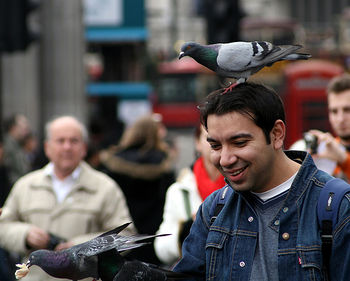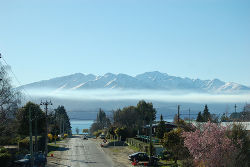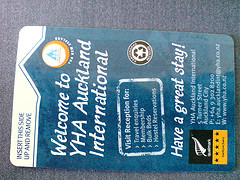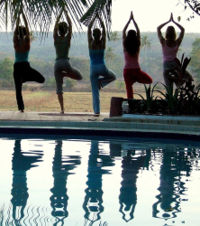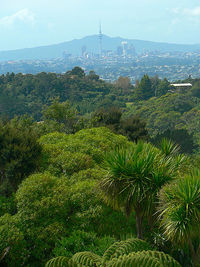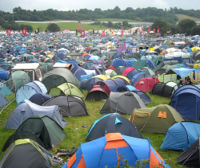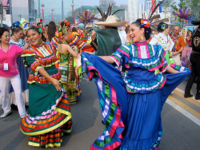Exploring Tourism
| Course Blog |
|---|
Exploring Tourism Course BlogFailed to load RSS feed from http://tourism1.wordpress.com/rss.xml|Date|short|max=3: Error fetching URL: Maximum (0) redirects followed |
- Tourism contributes close to 10 per cent of New Zealand's gross domestic product and both directly and indirectly employs nearly one in ten New Zealanders. From publicly listed companies to owner-operated small businesses, New Zealanders are involved in tourism throughout the length and breadth of New Zealand. (Delivering the Promise Retrieved from NZ Tourism Strategy
Students will look at the concepts of strategic planning, campaign marketing and the cultural and environment impacts of tourism within a New Zealand context. As well as the organisations and associations involved in the industry both nationally and locally.
Read the Course guide to gain a better understanding of the requirements of the course - the learning outcomes are listed below.
Otago Polytechnic will be running this course from February - June 2016. If you would like to join this course, please contact Lynn Brandham.
Otago Polytechnic offers learning support through the Exploring Tourism weblog
People enrolled with Otago Polytechnic as students of this course have access to learning support services such as the libraries, the Community Learning Centres, regular contact with learning facilitators and lecturers, assessment services and certification.
Learning Objectives
1. Understand the key terms and concepts associated with tourism and hospitality and the nature of these industries.
2. Analyse the current status of tourism in New Zealand in terms of the factors that influence its growth and success.
3. Understand the roles of participants in the supply of the tourism product and their inter-relationships.
4. Understand the factors that affect the demand for tourism and hospitality, including the role of destination marketing.
5. Evaluate the impacts of tourism.
Course Schedule
Following is a list of topics we will work through in this course. Each topic has a general introduction, followed by a list of activities to work through, and finally a list of links and resources you might use to work through the activities.
Otago Polytechnic's course weblog will pace you through these topics and put you in touch with teachers, other students and a range of other media and information. Use this schedule as a way to look ahead and prepare in the course.
The nature of tourism; its key terms and concepts
We will be looking at the key terms and concepts associated with tourism and hospitality and the nature of these industries as they form part of the tourism sector.
Tourism is an all encompassing term which is not easily defined. We can start by looking at the terms; "tourism" - it could be described simply as a form of activity taken by people during leisure time. But then how do you define leisure? Jafari (1977) defined tourism as:
The study of man away from his usual habitat, of the industry which responds to his needs, and of their impacts that both he and the industry have on the hosts' socio-cultural, economic and physical environments.What about the term "tourist" - someone who engages in tourism?. Tourist or excursionist. What is the difference? Are you beginning to see how difficult this may be? Your first activity/assessment definitions will help with this process. The hospitality sector - has various categories in particular accommodation and catering services; commercial and non-commercial. The accommodation sector comprises of differing forms of sleeping and hospitality facilities these can be serviced or self-catering.
Unlike definitions for tourism chararacteristics of tourism can be more easily defined;
- Its all about the visitor experience
- The behaviour of tourists will normally result in the development of an industry to cater for their needs
- Tourism is a service industry
- Its demand driven
- A seasonal industry
- Fast paced
- It involves a complex set of interrelationships between people, places and products eg. One Industry Concept - Tourism is an industry which is often defined by visitors (where ever they are from) who access and buy tourism products and services. For example; accommodation, attractions and activities and of course the people who service them. These visitors also access services from sectors supporting tourism, such as the air travel industry; airports, aircraft engineering, air traffic control, travel agents, domestic and tourism flight operators. Therefore the tourism industry can be described as a composite industry and is itself part of other industry groupings.
- It impacts on the the host community
These factors all contribute to making tourism a complex industry to operate in.
Factors which influence the growth and success of tourism in New Zealand
Lets look back into history to when tourism first began.History Video What were some of the historical changes that affected the growth and development of the tourism industry? Why were particular forms of travel and certain destinations chosen by early tourists? What about from a New Zealand context; who were some of our first "visitors" - read through Tourism New Zealand's Centenary magazine One Hundred Years of Tourism and then use it as a resource towards the completion of this section of the course.Where are we at present? Tourism in New Zealand is shaped by, and closely connected to the environment, our culture and the society. From tourism businesses and support services, to industry associations, regional tourism organisations and Government agencies, Tourism Industry Association strategic direction and the amended final Three year Strategyare the documents that set a direction for tourism in New Zealand.
Backed up by this strategy is the statement of intent for the next three years Statement of Intent,which indicates the new direction backed up by increased funding from the Government.
Mission and Vision statements about us
Premium Travel Sector; luxury travel video
It keeps all of these organisations and individuals on the path of delivering a sustainable social, environmental and economic contribution to New Zealand. Tourism has been identified as important for future economic growth diagramas it contributes $24 billion to the economy yearly - 9% of New Zealand's gross domestic product. $7.1 billion was spent in New Zealand by international visitors in the year to June 2014 (Tourism New Zealand,2014). Tourism New Zealand
Lets take a look out how the strategy is already working out in the industry - complete this hospitalityactivity highlighting successful sustainable tourism/business practice.
Destinations
What makes New Zealand a unique destination? Do you know what it meant by the term and how it is applied in tourism. Is New Zealand attracting the right kind of tourist? Can Tourism New Zealand continue to sustain the number of visitors to our shores?
Tourists nowadays have a far greater choice of holiday destinations. A 'pick and mix' type of holiday or package now offers tourists a variety of destinations compared to the one-stop choice of say; a beach resort, cultural holiday, or short city break. Destinations which offer this are themeparks, ski resorts, spa towns and in particular......Cruising, an area which has grown considerably in the past few years for New Zealand Golden Princess. While cruise ships provide the means by which different destinations are visited, they also give tourists the choice of disembarking at the port of call for a visit, or staying onboard to enjoy the ships, attractions, amenities and ease of accessibility. Indeed not only are companies putting together a variety of destinations in New Zealand but destinations themselves are offering a greater choice of attractions.
Cruise New Zealand says that cruise arrivals will increase to 200,000 within the next two years - a leap of 90,000 passengers. Each visitor to New Zealand on a cruise ship generates around NZ$1700 for the economy. As the 2015/16 cruise season gets into full swing, a new cruise economic impact report forecasts the season’s contribution to New Zealand’s GDP at NZ$327.1 million,supporting 5633 jobs.
Australia accounts for the biggest number of international cruise ships in the recent 2013/2014 season, making up 40% of the numbers, followed by the US, UK, Canada and Germany.
" Cruise ships make up New Zealand's fourth largest inbound tourist market and is expected to grow to the third largest, with 206,000 people anticipated to arrive as passengers in the coming season," Auckland Tourism Events and Economic Development chief executive Brett O'Riley says.
So how does New Zealand's national tourism organisation - Tourism New Zealand go about delivering what it has promised to be a sustainable future and who will work with the tourism organisation to achieve this?
Roles and responsibilities are diverse in the tourism industry. Tourism New Zealand also provides a list of industry associations which help to make up the national tourism industry. This TIA relationships chart provides another perspective.
One organisation in particular the Tourism Industry Association of New Zealand is the largest representative body of tourism operators in New Zealand. It is a membership-based and private sector trade organisation with about 1700 members who collectively make up 85% of the country's tourism turnover.
As a way for you to learn more about tourism organisations and their structure please complete this roles activity/assessment.
Future growth - The New Zealand Tourism Three Year Marketing Strategy 2014-2016 sets out our vision for a successful, world-leading industry according to former Minister of Tourism the Hon. Damien O'Connor. It is seen as a way of caring for and sustainably managing New Zealand culture, natural and built environment. By embracing the key values of kaitiakitanga (guardianship) and manaakitanga (hospitality )the aims of the New Zealand Tourism Marketing Strategy 2016 can be obtained and the true meaning of achieving a 100% Pure New Zealand for visitors achieved.
There are however some challenges to contend with.
This concludes section one of this course - which covers the first two learning outcomes. The assessment forms part of a larger report covering the full course.
Participants, tourism products and their inter-relationships
Components of the tourism product
There are four major elements which make up the tourism product;
1. access to the destination or product
2. attractions at the destination
3. amenities or facilities at the destination
4. quality of service
Understanding and managing tourism supply
What is supply? It can be described as the provision of goods and services required to meet tourism demand. These can be divided into the following categories:
- descriptions of the industry and its operation, management and marketing
- geographical development and interactions which characterise the industry on a local, national and international scale
- effects which result from the development of the industry
To be able to understand how the tourism industry is organised, a knowledge of the tourism supply issues is critical.
According to Sinclair and Stabler (1997:58) in Page & Connell (2006:90) 'Tourism supply is a complex phenemenon because of both the nature of the product and the process of delivery.Principally, it cannot be stored (i.e. it is a perishable product), it is intangible in that it cannot be examined prior to purchase, it is necessary to travel to consume it, heavy reliance is placed on both natural and human-made resources and a number of components are required, which may be separately of jointly purchased and which are consumed in sequence. It is a composite product involving transport, accommodation, catering, natural resources, entertainment, and other facilities and services, such as shops and banks, travel agents and tour operators.'
Factors which influence supply are
a) demand - an action taken to satisfy needs
b) product or service which is offered (supplied) must equate with what is wanted (demand)
Ideally, a tourism product will be one which can be sold because it is in demand but in reality there are restrictions. What are they?
- one industry concept (quality included)
- tourism supply
- Characteristics of tourism product
- tourist demand
- hospitality and catering sector, quality, classification
- nature of demand for accommodation facilities/characteristics of the hotel product (yield management, perishability)
Information communication technologies and e-tourism has revolutionised the way travel businesses operate and has transformed the tourism supply chain. Some of the major changes have been:
- allowing companies to understand how to improve yields from products and profitability
- tailor products to meet market demand
- improved communication between suppliers
- react quickly to changes which helps manage supply and demand
- expand companies operations both geographically and in size
- changing the role of intermediary in the supply chain with rise of e-mediaries
NZ Tourism has carried out research on the way tourists travelling to New Zealand are accessing the tourism product. Please go to their websiteto see an overview of the results.
One of the key characteristics of tourism is that the tourist is involved in a decision making process. Firstly they must decide that they wish to leave their home for a period of time e.g. for a relaxing cruise or for an extended journey to 'see the world'. People are motivated by the desire to satisfy needs and we will study some of the concepts relating to tourism demand. These include Maslow's Hierachy of Needs, Push and Pull factors, Ramumbo and the Psychocentric-Allocentric model. Assess your own classification by the completing a short quiz. New Zealand tourism has interviewed tourists from our main tourism markets and provides research on their activities and preferred choice of travel. Go to the next activity to analyse this information. Other personal factors also influence tourist motivation including the following:
- age
- family lifecycle
- gender
- disability
The hospitality sector provides much of what the tourist experiences on their holidays, including accommodation, food and drink away from their home environment. Hotels can provide facilities not only for somewhere to stay but also for transacting business, including meetings and conferences, for entertainment e.g. music and recreation. The hotel or resort may be the attraction which motivated the tourist to travel e.g. The Venetian in Las Vegas and Burj Al Arab in Dubai.
Accommodation is categorised based on type but the terms used can differ worldwide. How many types can you list? In Britain the category of an "Inn" describes pub-style accommodation but in the U.S.A. this will describe hotel style accommodation. This does not help the tourist when trying to decide on their selection of accomodation.
Classification of accommodation relates to the physical amenities and features each type may have. e.g. restaurant, swimming pool etc. Classification and grading are closely related but there are in fact distinct differences. The classification of location for a hotel as being close to an airport does not affect its grading. Often accommodation will be classified and then graded.
Grading systems differ throughout the world by using numbers, letters or symbols. The schemes make qualitative judgements of facilities and services. The aim is to provide consumers with accurate and unbiased assessment. Investigate the different grading systems in three countries (apart from New Zealand) and explain the ratings they use.
In groups, discuss the benefits of a grading system for:
- the consumer
- the tourism operator in New Zealand
- to New Zealand as a destination
Location is seen to be the most important factor when analysing the demand for accommodation. Tourists need somewhere to stay when visiting a destination. Coaching Inns, railway hotels and now hotels and motels close to airports trace the changes in transportation provided historically. The two main market distinctions are the business and the holiday traveller. The corporate traveller will require accommodation close to the business area usually the city centre. Dependent on the motivation for travelling, the holiday traveller may also wish to stay in the city e.g. to visit museums or to see an exhibition or show but may also desire a beachfront hotel or resort. The major other factors affecting the demand include facilities at the accommodation e.g. bars, restaurants, sports and recreation facilites, women only floors, price, size - large hotels can be perceived to be impersonal, customer type e.g. business or leisure travellers.
One of the major effects on the demand for accommodation is seasonality. Accommodation tariffs vary according to the season - in the period of peak demand, November through to February in New Zealand, the rates will be high. During the low season the rates will be less to encourage people to travel so the fixed costs of the operation can be covered. Periodicityrefers to changes in demand over a shorter time frame, usually one week.
Characteristics of the accommodation product are:
- fixed capacity
- perishibility
- fixed location
Quality can be defined as the product that exceeds the visitors expectations. As tourism is a service industry, quality is linked with the tourists interaction with industry personnel. Services are 'intangible' because they cannot be included in a stock record such as a pair of trousers. They are also highly 'perishable' just as vegetables spoil on supermarket shelves and have to be discounted or thrown away, the same happens to tourism services such as the airline which has now departed or hotel rooms which have not been sold on a particular night. Qualmark is the New Zealand standard which strives to provide assurance of a consistent standard of quality which lives up to the expectations of our visitors. A quality product requires investment in research, maintenance of amenities and attractions, development of infrastructure and investment in human resource development. Quality and excellent service are inseparable and are vital for the success of the one industry concept.
The role of destination marketing
Marketing within a tourism context in New Zealand is carried out on a multi-level basis. Internationally, nationally and regionally.
However to appreciate these campaigns we first need to study some of the basic concepts of marketing . Lets start by using some of the analytical tools available for looking at the macro environment - PESTEL. It is a useful strategic tool for understanding market growth or decline, business position, potential and direction. Then the micro environment - SWOT. Often used when specifying objective/s for business ventures or projects and identifying the internal and external factors that are favourable and unfavourable to achieving these objective/s. Points identified in a PESTEL analysis will often turn up in the SWOT analysis .
The marketing mixfor tourism extends the usual 4P's approach identifying the special service needs of tourism.
Who are the organisations involved in marketing New Zealand as a destination?
Target Marketing is a business term meaning the particular market segment to which a product and/or service is marketed. A product focusing on a specific target market contrasts with one following the marketing strategy of mass marketing. Target marketing ensures more effective use of resources and allows the marketing mix (4P's) to be specifically developed to suit an identified group of customers.
The marketer can then look for similarities in benefits that customers in the group are seeking. A market segment is a sub group of people (in our case) sharing one or more characteristic that cause them to have similar product needs. Segmentation can be a useful strategy when there are a number of competitors in the market place. Lets take a look at TNZ's target markets and in particular two identified groups of visitors - Active Considerer.
The marketing term "Positioning" and its ensuing strategies, looks at the position of the destination in relation to the marketplace and competitors. It addresses issues such as how the destination is “perceived” by the market, an analysis of the products strength and weakness and how these can be compared to the threats and opportunities in the external environment, as well as the previous success of the destination shown in statistical reports Position is important, since marketing strategies are developed based on the kind of image the company or destination in this case expects to maintain in the eyes of the customer. What image does a destination such as Dunedin, Queenstown and Middle Earth hold in the minds of current or potential visitors? Positioning Research can help decide the optimum positioning for a product. This refers to how the product fits into the market, what its image is or will be, and who is likely to buy it.
Terms such as:
- Market Leader - the destination with the largest market share whose strategies include expanding total market demand, defending market share against challengers and growing market share
- Market Challenger - poses a threat to market leader, already has a large market share, uses attacking stragies to beat the leader
- Market Follower - follows leaders, only wants enough of the market to be profitable, aims to maintain market share and defend against challengers, may copy leaders or challenges products. Should be considered when you are looking at setting positioning strategies.
Two other marketing strategies worth considering when looking at a destination are:
- Niche Marketing - where the product satisfies a specific segment only and one which is not catered for by larger destinations
- Relationship Marketing - where the tourists travel experience is constructed of products/destinations supplied by areas working in conjuction with each other.
Regional Tourism
Regional Tourism Organisations are responsible for promoting their regions to domestic and international visitors. There are currently 29 in New Zealand and these vary in size, structure, and scope of the activities they undertake. Some are funded in part or in full by local council, others by annual membership fees. These organisations all have marketing objectives. Lets take a look at how Wellington has positioned itself as a niche market and leader in the domestic tourism market.
How do we know all of this information? How do we gather it? What is its worth? Research - the systematic and objective search for information. How would you go about this? The Ministry of Tourism research website is the home of New Zealand's official tourism research programme. You can find all the latest tourism information here, from future forecasts to projects.
Impacts of tourism
Tourism can have a major effect on a country, region or city which can be either positive or negative. One of the main reasons used by government agencies and private sector tourism businesses for developing tourism is the economic gain but there are also social, cultural and environmental impacts.We are firstly going to study the economic impact by explaining and defining the following:
1. Balance of payments - this refers to the record of transactions between the residents of a particular country and the rest of the world during a period of time. This includes all imports and exports. The justification for increasing tourism in a region is usually the economic advantage. The income earned by visitors overseas is spent in New Zealand or forwarded to New Zealand to pay for travel with New Zealand companies e.g. Air New Zealand. This increases the foreign exchange earnings for New Zealand and the difference between this total and the amount spent by New Zealanders travellers overseas (imports - using money earned in New Zealand to purchase goods and services e.g. accommodation out of the country)is how the balance of payments is calculated. Research the balance of payment accounts in Japan, United States of America and New Zealand.
2. Direct versus indirect - the direct effect is created when the tourists spends their money at a tourist attraction.e.g. Speights. The indirect or flow-on expenditure by the attraction is known as 'indirect income'. Think of examples of indirect income that will be created by the Speights Tour in Dunedin.
3. Employment - in much the same way that there are direct and indirect economic effects, there are also different layers of employment generated by tourism.
- direct employment - jobs created to directly support tourism activity e.g. hotels, airlines
- indirect employment - extends to the jobs which are indirectly affected by tourists e.g. agriculture, construction
- induced employment - jobs created as a result of tourism expenditure as local residents spend money earned from tourism
4. Income - tourism can lead to an increase in a nations gross domestic product (GDP). In some Pacific Islands over 40% of the nations GDP is derived from tourism. Investigate the value of tourism to the Maldives gross domestic product. As well as being a source of foreign exchange earnings, tourism also can increase government revenue through the payment of taxes by tourists. e.g. visa fees. What other taxes does the New Zealand government charge tourists?
5. Tourism multiplier and leakage - a multiplier is a statistical tool to measure income or employment generated by a certain amount of tourism spending. The income multiplier is the ratio of income to the tourist spending that generated it. The tourism multiplier must be viewed in conjunction with a calculation of the amount of foreign exchange which leaves the local economy in the form of leakage. Common sources of leakage include:
- repatriation of profits generated from overseas investment
- not purchasing local goods and services
- ownership of transport
- payment for holidays made in the generating country
- expenditure on overseas promotion
- interest paid on foreign loans
The tourism satellite account provides a wide range of economic data relating to tourism. The account enables the following features to be identified:
- direct impact of tourism on GDP
- tourism expenditure as a percentage of GDP
- direct employment as a percentage of total employment
- international and domestic travel expenditure as a percentage of total travel expenditure
- domestic business and government expenditure as a percentage of total travel expenditure
- the value of taxes paid by tourists
6. Inflation - tourism development will often cause an inflationary effect of local economies increasing food prices, transportation and clothing. Land values and housing also increase drastically sometimes excluding local residents from their own communities even though they provide the labour for the tourism industry e.g. Queenstown
In pairs, look at the activity for this topic where you will be researching the economic impacts on a host destination.
As we have discovered in the definition of tourism, it takes place away from one's home. The community or country the tourist visits is termed the 'host community'. The nature of the host-guest encounter depends on the type of contact, the importance of tourism to the community, the tourist-host ratio and the cultural difference between guest and host. An Australian tourist visiting New Zealand is going to have little socio-cultural affect in comparison to the same tourist visiting Bhutan. A number of studies have looked at ways of assessing the impact on host communities including Doxey's Irridex (irritation index). He stated the levels of host irritation would move through four different levels from 'euphoria' to 'apathy' to 'annoyance' to 'antagonism'. Later studies by Ap and Cromption (1998) have yielded more reliable data because they have recognised that host communities are not homogenous.
Other factors which influence sociocultual impacts are;
- Types and number of tourists e.g. low numbers of independent travellers less impact than high volume using mass tourism facilites. What do you think?
- Length of stay of visitors
- Importance of the tourism industry to the area - is it the main industry
- Size and pace of development e.g. larger communities less affected than smaller communities
The demonstration effect is when attitudes, values or behaviours are changed from observing tourists. The effect can be advantageous or disadvantageous. Acculuration is when contact between two cultures results in the sharing and adoption of each other's values and attitudes. Problems result when a culturally weak society comes into contact with a culturally strong society which will transfer its values to the weaker society. Less developed countries who have had little contact with Western society are more susceptible to acculuration.
The cultural impacts of tourism can be:
Positive - preserving and revitalising traditional practices by providing financial support. Tourists interest in local culture, arts and crafts and historic places can engender pride in the indigenous population for their cultural heritage.
Negative - transforms cultural events into commercialised products or shows with no meaning. e.g. 'staged authenticity' and 'airport art'.
Tourism can impact on the host country's language and religion. In groups, explain the different ways they can be influenced. Your activity to hand in by next Tuesday is to investigate the effects of tourism on New Zealand culture.
Tourism operators and marketeers often describe a destination as 'unspoilt' or in New Zealand's case '100% Pure'.However, the reality is that since the onset of mass travel, tourism development has taken place with little concern about the environmental impact. We have discussed how tourism is an important contributor to the economy and there is now emphasis being placed on the importance of managing and protecting the environment. Tourism not only affects the environment at the destination but also on a global level it is a major contributor to the despoliation of the environment, mainly because of transport's contribution to pollution.On the other hand, tourism has the potential to create beneficial effects on the environment by contributing to environmental protection and conservation and raising awareness of environmental values. How many negative environmental effects can you list that occur as the result of tourism? Provide an example either worldwide or in New Zealand. The world environment also affects tourism - natural disasters, climate change, extreme climate events, spread of tropical diseases e.g. malaria, deterioration of holiday destinations e.g. less snowfall at ski resorts, rising sea levels, coral reef bleaching etc. Now lets look at the positive effects that tourism has on destinations and the environment by researching via the activity - positive environmental effects.
Resources

